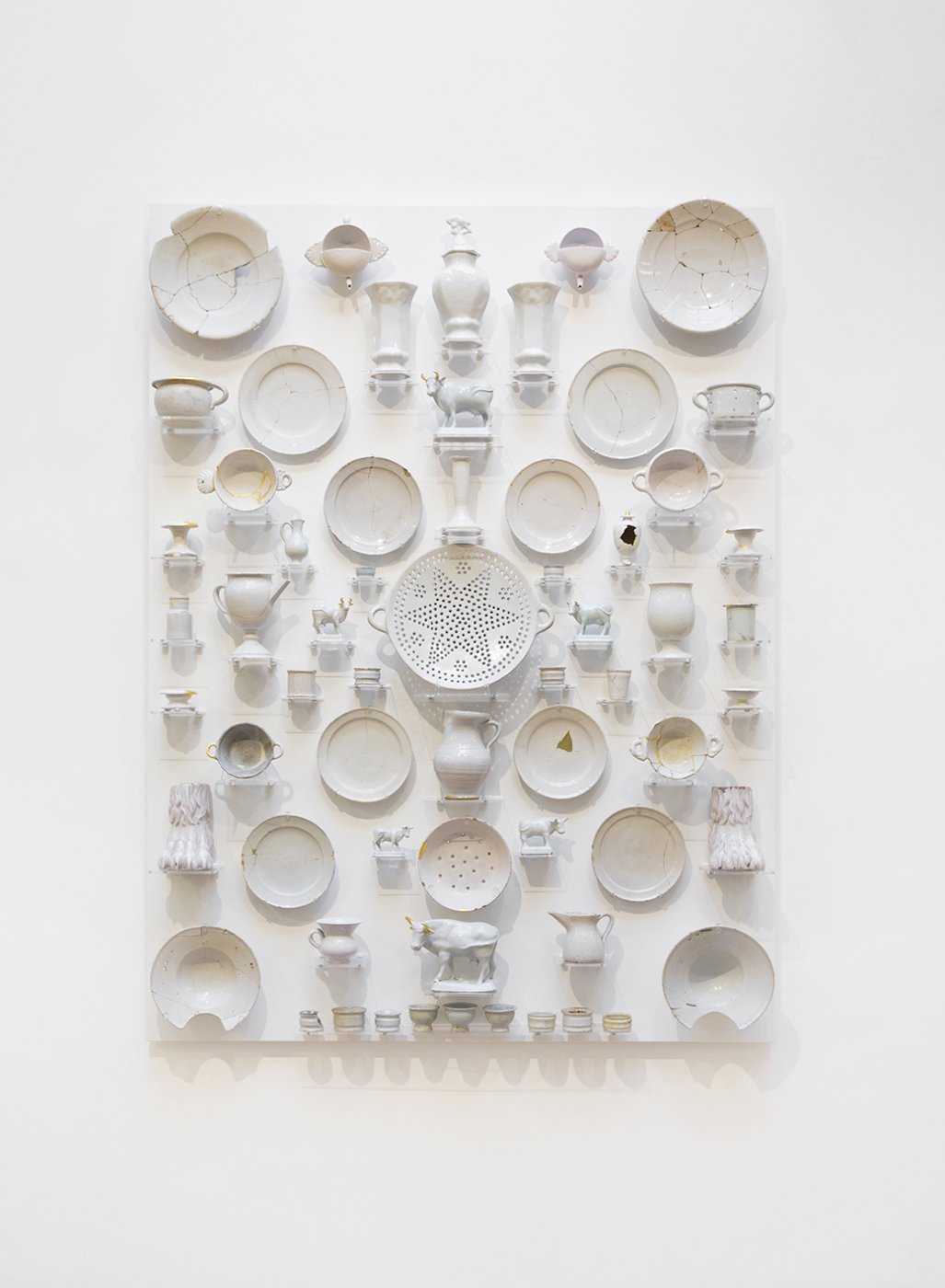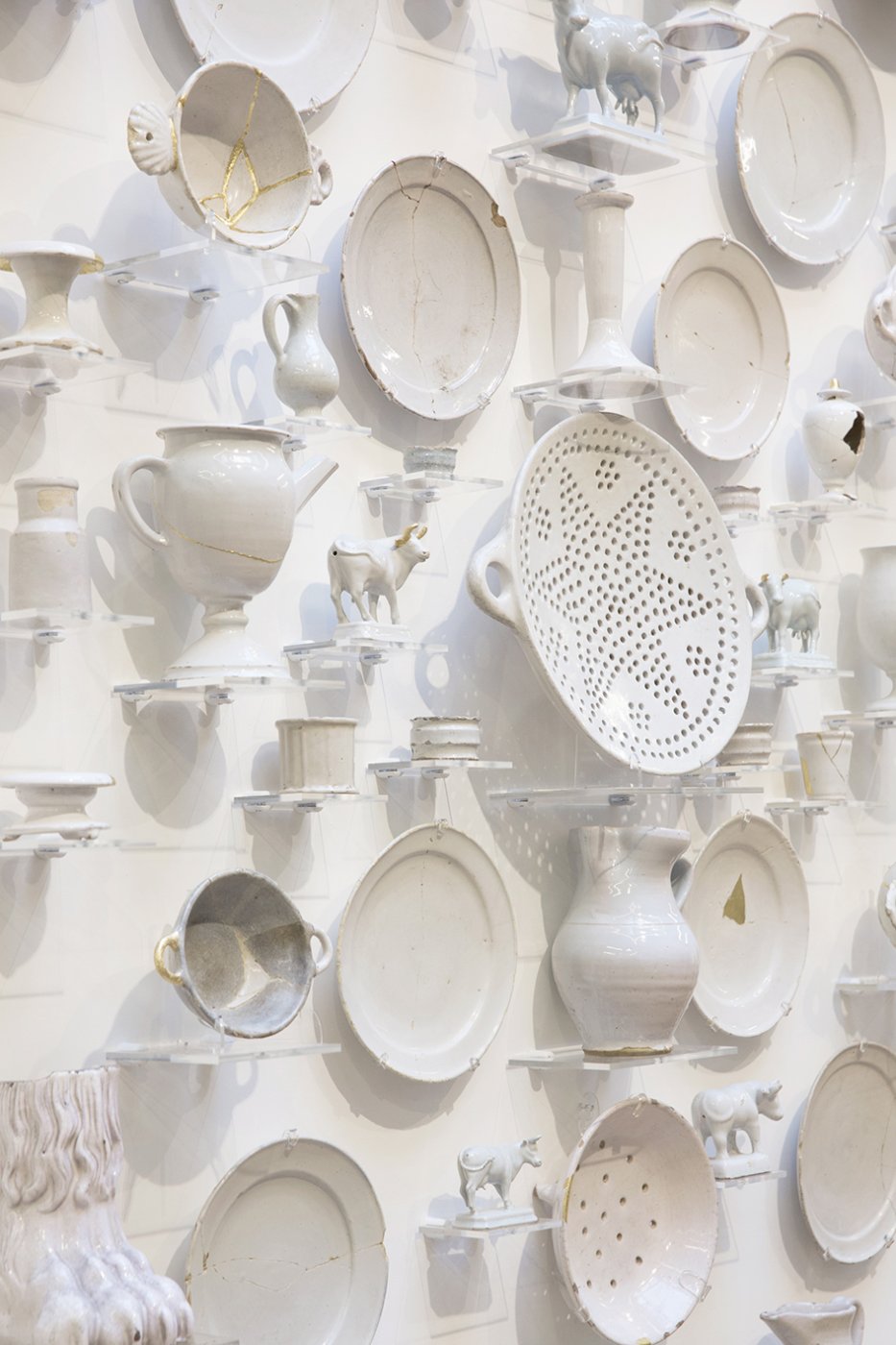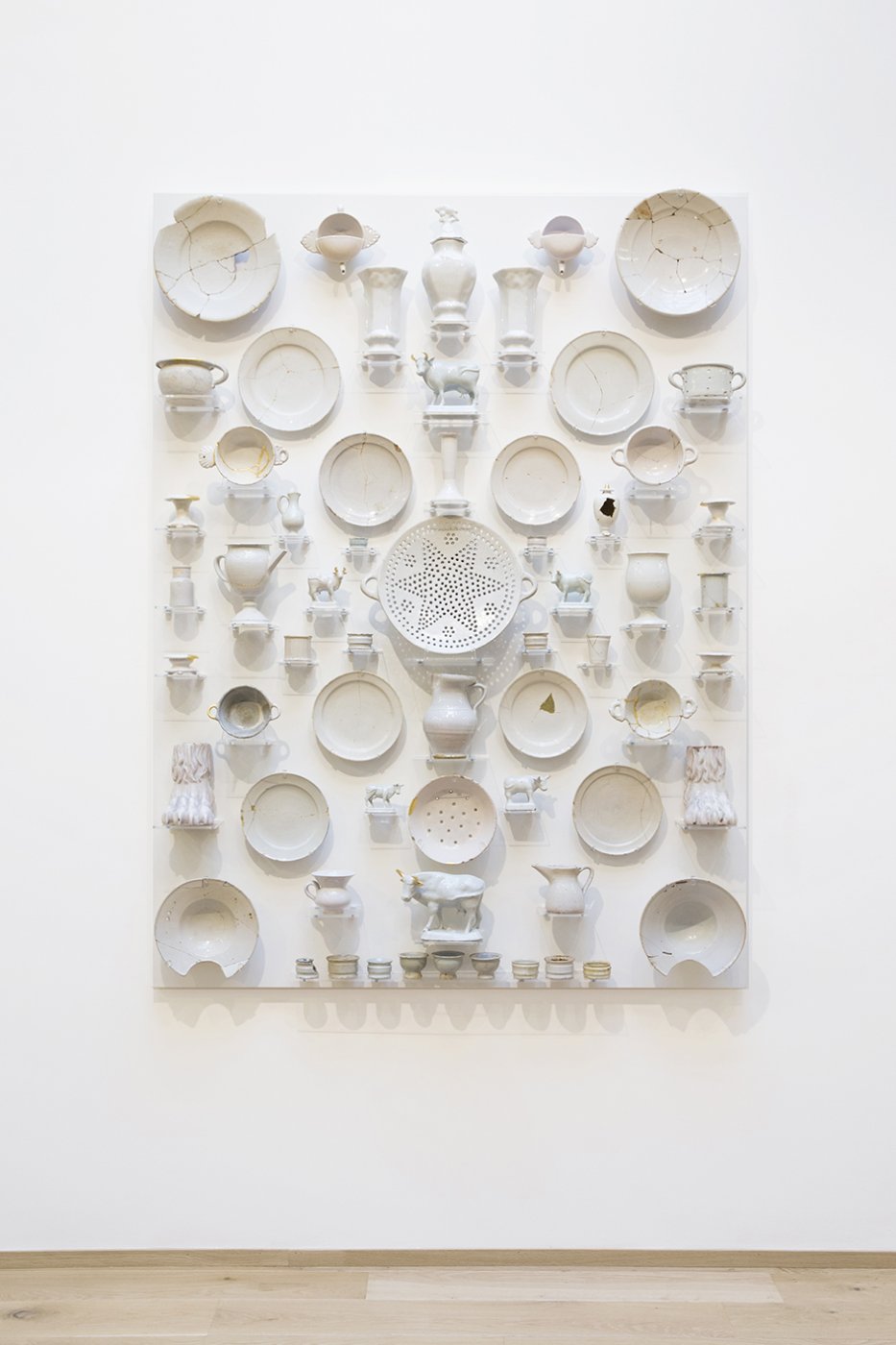Bouke De Vries
The Wall 2
2018
17th, 18th and 19th century Delftware
150 x 200 cm
17th, 18th and 19th century Delftware
150 x 200 cm
About the artist
Born in 1960 in Utrecht, Bouke de Vries studied at the Design Academy Eindhoven, and Central St Martin’s, London. After working with John Galliano, Stephen Jones and Zandra Rhodes, he switched careers and studied ceramics conservation and restoration at West Dean College. Every day in his practice as a private conservator he was faced with issues and contradictions around perfection and worth: “The Venus de Milo is venerated despite losing her arms, but when a Meissen muse loses a finger she is rendered virtually worthless”.
Using his skills as a restorer, his exploded artworks reclaim broken pots after their accidental trauma. He has called it ‘The beauty of destruction’. Instead of reconstructing them, he deconstructs them. Instead of hiding the evidence of this most dramatic episode in the life of a ceramic object, he emphasises their new status, instilling new virtues, new values, and moving their stories forward.
The more contemplative works echo the 17th- and 18th-century still-life paintings of his Dutch heritage, especially the flower paintings of the Golden Age, a tradition in which his hometown of Utretch was steeped, with their implied decay. By incorporating contemporary items a new vocabulary of symbolism evolves.
Using his skills as a restorer, his exploded artworks reclaim broken pots after their accidental trauma. He has called it ‘The beauty of destruction’. Instead of reconstructing them, he deconstructs them. Instead of hiding the evidence of this most dramatic episode in the life of a ceramic object, he emphasises their new status, instilling new virtues, new values, and moving their stories forward.
The more contemplative works echo the 17th- and 18th-century still-life paintings of his Dutch heritage, especially the flower paintings of the Golden Age, a tradition in which his hometown of Utretch was steeped, with their implied decay. By incorporating contemporary items a new vocabulary of symbolism evolves.




